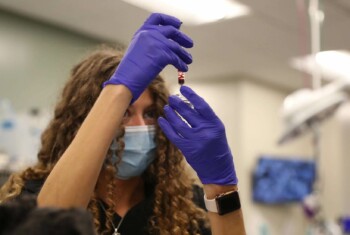Accidental pet poisoning continues to be an issue of concern for our clients and our hospitals. In 2021, chocolate remained BluePearl’s top toxic substance — followed closely by marijuana poisoning, intoxication, and ingestion. Chocolate toxicity cases begin to increase during the week of Christmas and spike on Christmas Eve. In 2021, BluePearl hospitals saw an approximate 372% increase in chocolate-related emergency visits on Christmas Eve (versus other days of the year).
Most toxicity cases at BluePearl are the result of dogs and cats getting into substances around the house or outside. It’s important to educate clients about these dangers. Some foods, medications, plants or household substances that are safe for humans may be harmful to a dog or cat.
Toxicity: Most Common Causes of Poisoning in Pets
- Chocolate
- Marijuana (poisoning, intoxication, ingestion)
- Rodenticide
- Grapes
- Non-steroidal anti-inflammatory drugs (examples: aspirin or Advil)
- Raisins
- Xylitol (a common sugar substitute)
- Lilies
- Drugs (medication)
- Various other plants
It can be difficult to know for certain if a pet ate something they shouldn’t; accurate and complete information is imperative for treating the patient successfully.
Marijuana vs. Chocolate
Although BluePearl hospitals have continued to see a decline in chocolate toxicity since 2015, marijuana toxicity cases continue to remain steady, with the initial spike in marijuana-related incidents happening from 2017 to 2018. BluePearl investigators predict that marijuana toxicity will surpass chocolate toxicity incidents in 2022 or 2023, as more states move to legalize recreational use of the substance.
This increase makes it critically important to educate pet owners on marijuana toxicity.
Tetrahydrocannabinol or THC — the most potent psychoactive cannabinoid in marijuana — can be absorbed both orally and through inhalation. Symptoms can show in as few as five minutes and include depression, lethargy, pupil dilation, slow heart rate, hypothermia and leaking urine. While uncommon, seizures and coma can also occur.
Read our full 2021 pet health trends report at bluepearlvet.com/pet-health-trends.


